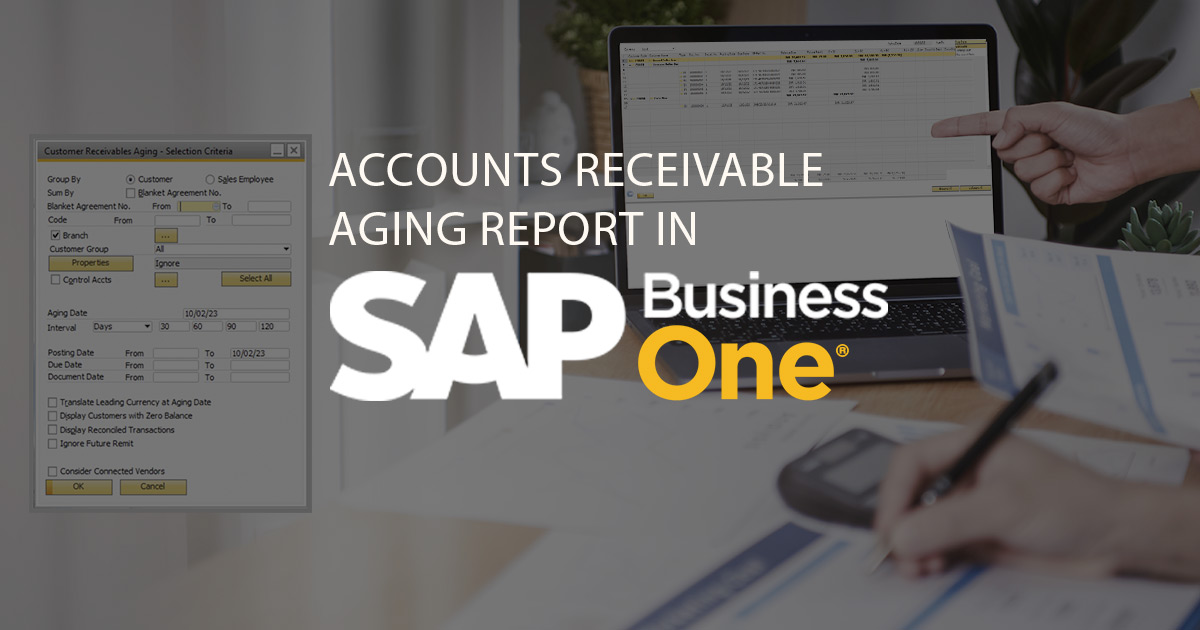Dealing with large amounts of customer data is something every organization faces. Especially so when you’re rapidly growing or already established. Usually, things such as customer spending & purchasing habits, preferences, etc., are parts of this data. It’s a gold mine for any business that can analyze it and strategize accordingly.
However, that is something easier said than done. Done manually, the process of collecting data and analyzing it can be a time and effort-consuming exercise. Something Small and Medium Enterprises (SMEs) can ill afford to waste. Plus, there is always a chance of human errors in the manual route.
And that’s where ERP solutions like SAP Business One come in. Comprehensive solutions allow you to automate and streamline your business, plus provides the capabilities to analyze business data and create reports, both default and custom. These reports offer critical insights into business and aid in efficient functioning and decision-making.
And one of the reports dealing with such critical data is the Accounts Receivable (A/R) Aging Reports in SAP Business One. A/R Aging Reports provide invaluable insights about your customers.
But what is an A/R Aging Report in SAP B1?
Simply put, Accounts Receivable or A/R Aging Reports are integral and periodic reports that help organizations to gauge the financial conditions of their clients/customers. It does so by categorizing your firm’s account receivables against a customer at any given point or a particular time the invoice has been pending. Hence, it gives you an insight into the financial health & reliability of the customer.
How does your business benefit from Aging Reports?
- Used for risk assessment of clients/customers & ascertaining if they’re becoming credit risks.
- Handy during the preparation of an organization’s annual financial statements.
- Provides insightful analysis regarding prevailing strategies in place for credit policies and selling.
- Helps Lenders/Investors assess the company’s short-term solvency, long-term solvency, and working capital requirements.
Now that we know what A/R Aging Reports are and the purpose they serve, let’s see how you can run them in SAP Business One:
- There are two ways you can create aging reports. They are:
- Financials > Financial Reports > Accounting > Aging
- Business Partners > Business Partner Reports > Aging
- In order to create a Consumer Receivables Aging report, you can follow one of the above steps and select Customer Receivables Aging right after Aging.
- Once done, the Customer Receivables Aging – Selection Criteria window will open. You’ll find various selection criteria such as Group By, Sum By, Blanket Agreement No., Code, Branch, Customer Group, and more.
- Choose the customer(s), select the criteria you need on the report, and set the Aging Date.
- After all the necessary selections and criteria are selected, click the OK button to run the report.
A/R Aging Reports in SAP Business One are integral in understanding and evaluating the finances of both; the organization and customers. It is a critical tool that helps manage cash flow and determine customers’ credit quality. And knowing how to run an A/R Aging Report in SAP B1 will always put you at an advantage.
Want more helpful information about processes in SAP Business One? Or would you like a more in-depth understanding of SAP Business One? Then get in touch with Accelon - a Certified SAP Business One Gold Partner & the most reliable ERP software provider in India.
